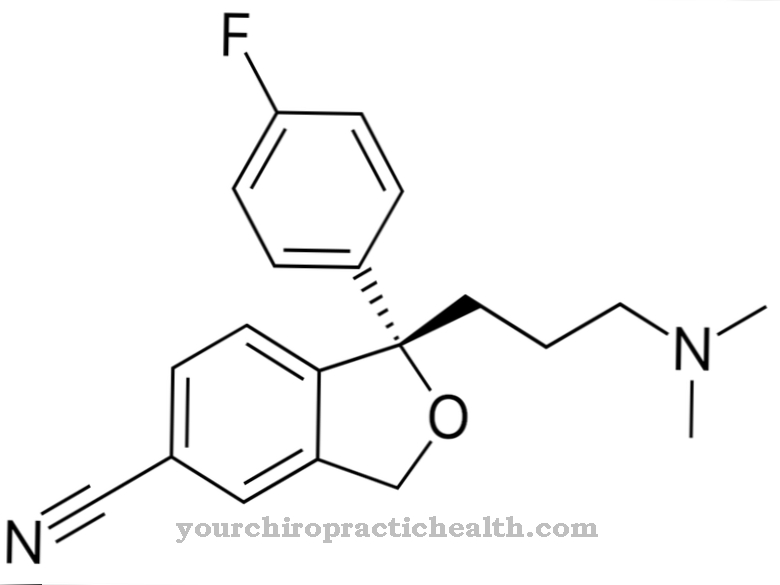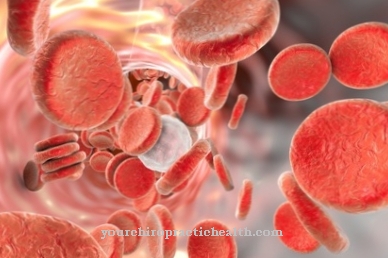At Hydrochlorides they are salts that consist of organic bases and react with hydrochloric acid. Hydrochlorides therefore also belong to the amines of the primary, secondary and tertiary type. It is always typical of hydrochlorides that they enter into a neutralization reaction with hydrochloric acid. Due to their chemical properties, hydrochlorides are a popular additive in numerous drugs.
What are hydrochlorides?
Hydrochlorides are basically salts that consist of organic bases and hydrochloric acid. In the course of a chemical reaction, the bases neutralize with the hydrochloric acid. The typical reaction for the formation of hydrochlorides is similar to the formation process of ammonium chloride, with ammonia and hydrochloric acid reacting with each other. In principle, all hydrochlorides have a chloride atom and for this reason are classed as salts. The parent compounds of the hydrochloride are in most cases amines.
Unlike amines, however, hydrochlorides are generally characterized by significantly better water solubility. In addition, hydrochlorides can be cleaned more easily, using recrystallization. Hydrochlorides, which belong to the amines, are characterized by a higher stability and age considerably more slowly. Resistance to degradation is particularly evident in the color of the hydrochloride. These advantages of the hydrochloride are particularly noticeable when compared to amines, which are free and basic.
Chemistry divides hydrochloride into monohydrochloride and dihydrochloride, among other things. Monohydrochlorides are mainly formed from di- and triamines as a result of a reaction with hydrochloric acid. In contrast, dihydrochlorides are formed when organic diamines react with an excess of hydrochloric acid. Typical dihydrochlorides are, for example, meclozin, arsphenamine and sapropterin. In addition, hydrochlorides belong to the group of hydrohalides. Other representatives of this category of chemical substances are, for example, hydrobromides and hydrofluorides.
Pharmacological effect on the body and organs
Hydrochlorides are characterized by very good solubility in water and high bioavailability in the human organism. For this reason, they are used in numerous medicinal drugs to increase the effectiveness of the corresponding drugs. Pharmaceutical manufacturers manufacture the drugs directly in the form of hydrochlorides.
The water-soluble hydrochlorides facilitate the production of aqueous drugs and solutions, such as drops for the eyes, injection solutions and nasal sprays. The solubility in water also plays a decisive role in the case of medicinal products to be taken orally, since the stomach and intestines only absorb the active ingredients if they are water-soluble. The active substances dissolve from the tablets or dragees so that they can then be resorbed. This means that the drugs pass into the bloodstream more quickly.
Properties such as the high stability and the good processing options of the hydrochloride are also relevant for their extensive use in the manufacture of drugs. Hundreds of different hydrochlorides are currently used regularly in pharmacy. Medicines based on hydrochlorides are particularly popular and in great demand, such as ambroxol and metformin.
Medical application & use for treatment & prevention
Hydrochlorides are used in a large number of medicaments, whereby they improve the resorption capacity of the active ingredients through their typical properties or in some cases only enable them. The decisive aspects for the use of hydrochlorides in the manufacture of pharmaceuticals are their stability and water solubility. On the one hand, these aspects facilitate the production of aqueous solutions such as drops or sprays. On the other hand, hydrochlorides improve the absorption capacity of active ingredients that patients take in the form of solid tablets or capsules.
The European Pharmacopoeia currently lists around 200 hydrochlorides that are used in pharmaceutical production. The drug substance catalog even contains over 1,000 different hydrochlorides. The use of hydrochlorides to manufacture the drugs ambroxol and metformin, both of which are in high demand, is particularly popular.
You can find your medication here
➔ Medicines for eye infectionsRisks & side effects
The side effects of hydrochlorides mainly depend on the drug they are used to manufacture. Hydrochlorides are often used, for example, in the drugs ambroxol and metformin. Ambroxol is an anti-cough drug combined with thick mucus that is stuck in the airways. Hydrochlorides form the basis for this active ingredient and its absorption into the blood.
Possible side effects include general symptoms such as nausea, vomiting and diarrhea, as well as pain in the abdominal region. Some people experience hypersensitivity reactions such as rashes, itching, shortness of breath, and facial swelling. Sometimes the patients develop a fever and chills. Symptoms such as toxic epidermal necrolysis, Stevens-Johnson syndrome or erythema multiforme are rare.
Hydrochlorides also form the basis in the drug metformin. Doctors primarily prescribe the drug for type 2 diabetes mellitus. Potential side effects include digestive tract complaints, for example. For example, some people develop symptoms such as nausea, diarrhea, stomach pain, or vomiting. In addition, the taste perception sometimes changes, so that some patients lose their appetite.
In rare cases, people will develop lactic acidosis after taking it. This manifests itself in aching muscles, complaints of the gastrointestinal tract and cramps.
The hydrochlorides themselves are far less responsible for side effects than the actual active ingredients of the drugs in which they are used. When developing drugs, pharmaceutical manufacturers check whether there are any undesirable interactions between the hydrochloride used and the active ingredient.




























